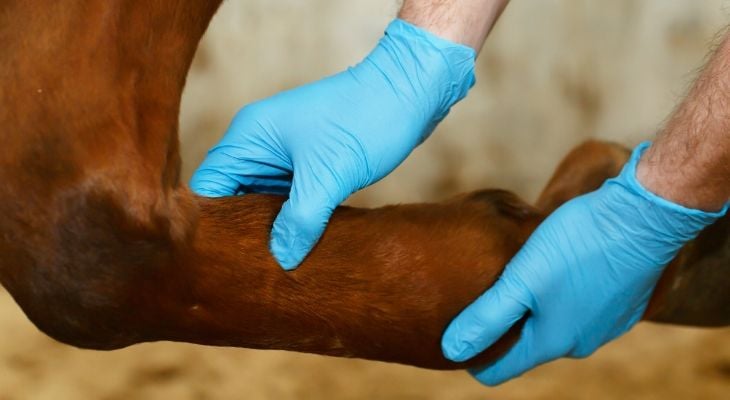
Bucked shins is the common name for very small fractures on the front part (periosteum) of a horse’s cannon bones. These bones are on the lower part of the leg, and run between the knee and the fetlock joint below.
Symptoms of Bucked Shins
Bucked shins are more common in 2- to 3-year-old Thoroughbreds that are just starting to train or race. It is estimated that up to 70 percent of these horses have bucked shins. This condition is less common in Quarter horses and Standardbreds.
Very small fractures (microfractures) of the cannon bone can develop when a horse trains at high speeds before the bones are ready. This puts more stress on the bone than it is able to withstand. More gradual training, however, can allow the bones to adapt to that stress and grow stronger.
The most common symptoms of bucked shins are:
- Pain when the front of the cannon bone is touched
- Warm swelling in the area of the cannon bone, starting as soft and then becoming hard later on
- Lameness and a shorter stride, with the lameness growing worse with exercise
A veterinarian may take an X-ray of the horse’s leg to confirm the diagnosis and rule out other problems in the bone.
Treatment for Bucked Shins
Treatment for bucked shins usually involves a combination of rest and medication to reduce the inflammation. Cold packs may also be used to reduce the symptoms. This is continued until the soreness and inflammation resolve.
Training of the horse can resume once the most severe lameness and pain has gone away; although, it will need to be done at a slower pace. Sometimes a horse may continue to have a hard, bony swelling (“bucked shin”) on the front of the cannon bone. This should not affect how well the horse races in the future.
Bucked shins may also be a sign of more serious stress fractures. These might need to be fixed with screws inserted into the bone to stabilize the fracture. It is always advisable to consult with your veterinarian for a proper diagnosis and treatment.
